10 Soccer Goalkeeper Drills for a Complete Practice
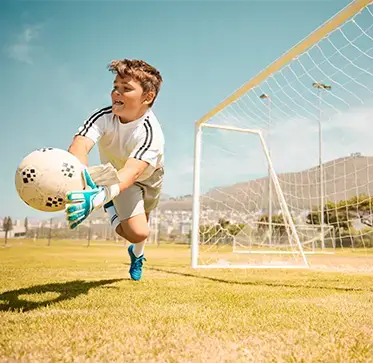
CRFC BLOGS
LATEST BLOGS & NEWSLETTERS
10 Soccer Goalkeeper Drills for a Complete Practice
In the sport of soccer, a goalkeeper plays a vital role. As the last line of defense, goalkeepers possess a unique set of skills that blend agility, precision, and resilience. Developing these skills requires focused practice and dedication. In this article, we explore 10 goalie training drills that aim to refine these abilities. These drills ensure that goalkeepers are well-rounded and prepared for any challenge.
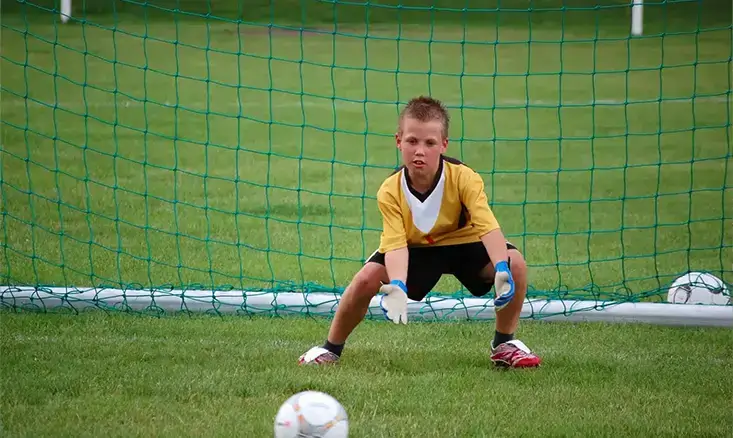
Key to Goalkeeper Training Success
Every soccer team’s success depends significantly on the performance of their goalkeeper. Thus, comprehensive training that covers various aspects of goalkeeping is essential. It includes reflexes and diving drills as well as handling and footwork drills. These training drills are designed to enhance a goalkeeper’s skill set. They make a well-rounded practice session that addresses every facet of goalkeeping.
Goalkeeper Drill 01: Three-Cone Drill
The three-cone drill focuses on improving a goalkeeper’s agility and footwork. By setting up three cones in a triangle, goalkeepers work on quick foot movements around the cones before making a save. This drill simulates moving around players to get into the correct position for a save.
Goalkeeper Drill 02: Single Cone Drill
In the single cone drill, a cone represents an obstacle or a player that a goalkeeper must move around to secure the ball. It enhances decision-making and simulates a match scenario. During a match quick navigation around players is crucial for making saves.
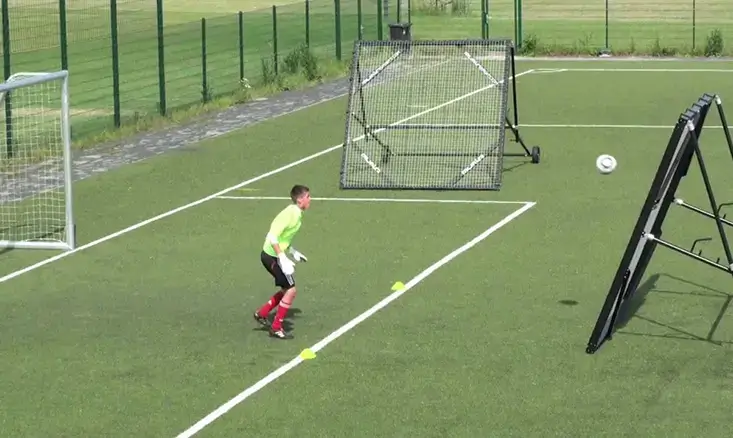
Goalkeeper Drill 03: Bounce Reaction Drill
Quick reflexes are important in goalkeeping. The bounce reaction drill trains them to adjust to unexpected changes in the ball’s trajectory. In this drill, a ball is bounced before reaching the goalkeeper which improves their reaction time.
Goalkeeper Drill 04: Low Diving Drill
Saving low shots requires precision and the ability to dive correctly. The low diving drill teaches goalkeepers to dive safely and effectively. It ensures they can reach low shots while minimizing injury risks.
Goalkeeper Drill 05: 180˚ Turn Drill
The 180˚ turn drill simulates scenarios where goalies must quickly turn and save a shot from an unexpected direction. This drill enhances agility and the ability to quickly reorient and position oneself for a save.
Goalkeeper Drill 06: Holding It Down in the Goal
This drill emphasizes the importance of holding onto the ball after a save. Goalkeepers practice catching and securing the ball from various shots. This drill reduces the chances of rebounds that could lead to goals.
Goalkeeper Drill 07: Deflect and Dive
Sometimes, making a save means deflecting the ball to a safer area. The deflect and dive drill teaches goalkeepers to deflect shots away while preparing to dive for potential follow-up shots.
Goalkeeper Drill 08: Agility Hands
Agility hands focuses on improving hand-eye coordination and agility. Goalkeepers must catch and release the balls thrown at them from different angles. This drill enhances their ability to handle shots from any direction.
Soccer Goalie Drill 09: Move with the Ball
Movement and positioning are crucial. This drill trains goalkeepers to move in line with the soccer ball, ensuring they’re always in the best position to make a save.
Goalkeeper Drill 10: Pass it on Drill
A modern goalkeeper must also be adept with their feet. The pass-it-on drill involves playing the ball out from the back, working on accuracy and control under pressure.
6 Goalkeeper Training Drills to Block
These six drills work to develop a goalkeeper’s ability to defend against incoming shots. They focus on enhancing their blocking skills, from quick reflex saves to managing aerial threats effectively.
Throw Against the Wall
Goalkeepers throw a soccer ball against a wall and make a save on the rebound, improving reaction time and save technique.
Knee Wall Dives
This focuses on diving technique, particularly for low shots, by diving from a kneeling position towards a ball rebounding off a wall.
Dive Off Wall in Air
Simulating high shots, goalkeepers push off a wall to dive and make a save, enhancing their aerial ability.
Goalkeeper Footwork Sideways to Dive
This drill works on lateral movement and diving, teaching goalkeepers to move sideways before diving to make a save.
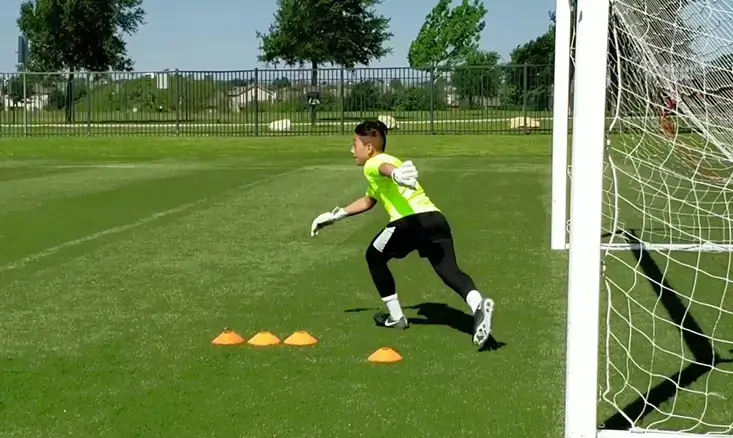
Shuffle Out-Back to Dive
Improving explosive movement and diving, goalkeepers shuffle out from goal before diving to make a save.
Over-Hand Throw- Bouncing Ball
Focusing on handling bouncing balls, goalkeepers throw a ball overhand to bounce before making a save. This drill trains them to deal with unpredictable shots.
Regular Practices
Integrating these drills into regular training sessions will significantly enhance a goalkeeper’s skills. It ensures they’re prepared for the varied demands of the game. Integrating these drills into regular sessions, such as those offered in soccer summer camps, ensures goalkeepers are prepared for the varied demands of the game.
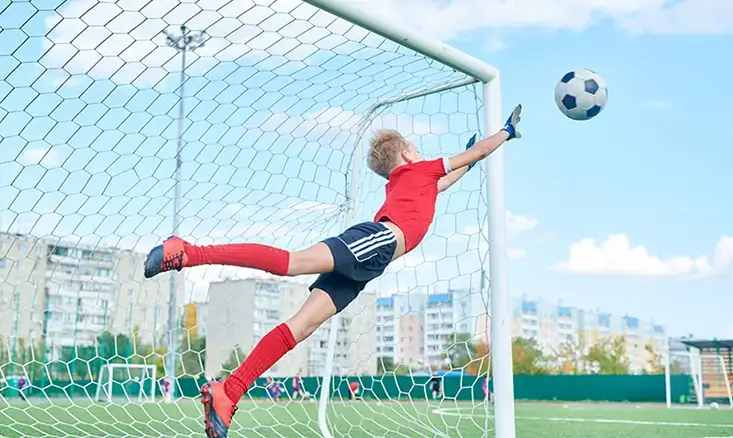
Conclusion
Goalkeepers are a vital part of any soccer team, often making the difference between a win and a loss. Through dedicated practice of these drills, goalkeepers can develop their skills. Regular practices also improve their performance and contribute significantly to their team’s success. Remember, mastery comes with practice, and every drill is a step toward becoming a more competent and confident goalkeeper.
FAQs
How do you train a goalkeeper in soccer?
Training a soccer goalkeeper involves a variety of drills focusing on agility, reflexes, handling, footwork, and diving. Key drills include moving around cones for agility, practicing catches and dives for different shot types, and enhancing reaction times with bounce and movement drills.
How can I improve my goalie in soccer?
To improve as a goalie in soccer, practice drills that target your quick reflexes, diving techniques, handling bouncing balls, and moving accurately around obstacles. Regularly engage in exercises like the three-cone drill, bounce reaction drill, and low diving drill to sharpen your skills.
How many hours do goalkeepers train?
Goalkeepers typically train for about 2 to 4 hours a day, focusing on specific goalkeeping skills, tactical understanding, and physical conditioning to ensure peak performance and quick recovery.
What are the basics of goalkeeping for beginners?
For beginners, the basics of goalkeeping include proper stance, understanding how to catch and dive for the ball safely, positioning oneself effectively in the goal, and developing quick reflexes and footwork to respond to shots.
What is the 4-step rule goalkeeper?
The “4-step rule” for goalkeepers refers to a rule allowing them to handle the ball within their penalty area for up to four steps before they must release it. This rule encourages quick play and prevents goalkeepers from unfairly wasting time by holding onto the ball.

Did you find this useful?


